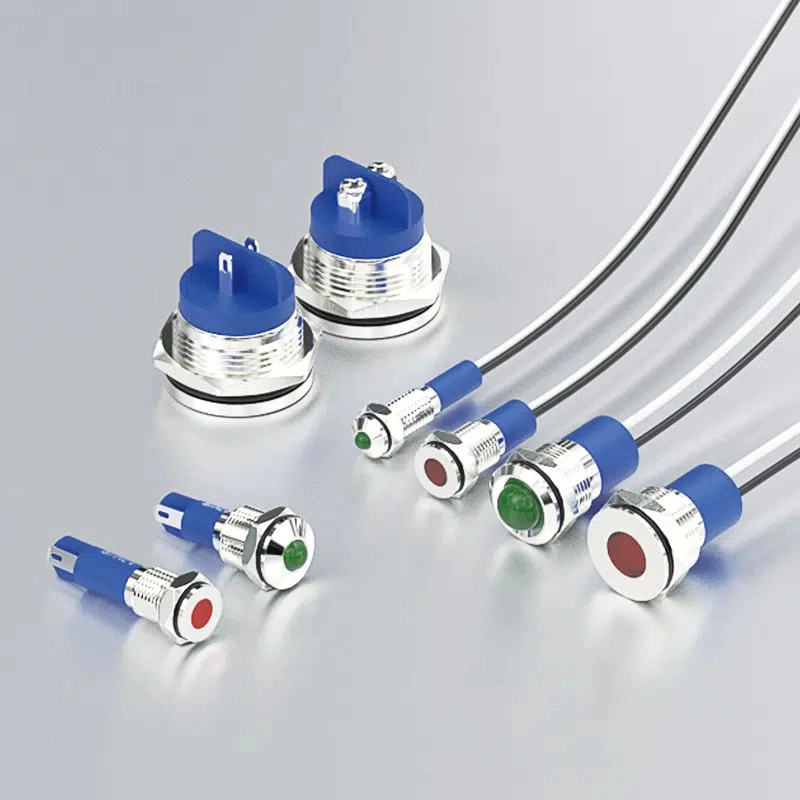Understanding the Role of Emergency Stop Buttons in Industrial Safety
Workplace safety is a critical concern for employers and employees alike. One of the most effective safety mechanisms in modern machinery is the emergency stop button. This essential feature allows workers to halt operations instantly in case of an emergency, preventing accidents and minimizing risks. What is an Emergency Stop Button and How Does it Work? The emergency stop button is a fail-safe control device designed to shut down equipment immediately when pressed. It functions as a direct intervention tool to stop hazardous situations from escalating. Types of Emergency Stop Buttons There are various types of emergency stop buttons, including: Push-Pull Type: Press to stop, pull to reset. Twist Release: Requires twisting to reset after activation. Key Release: Needs a key for reset, preventing unauthorized use. Cable-Operated: Uses a pull cord for activation, ideal for large machines. Importance of Emergency Stop Buttons in Safety Management The emergency stop button is a crucial part of workplace safety for several reasons: Prevents Injuries: It allows workers to stop machinery instantly, reducing injury risks. Protects Equipment: Quick shutdowns prevent costly damage to machines. Ensures Regulatory Compliance: Many industries require emergency stop mechanisms by law. Increases Worker Confidence: Employees feel safer knowing they have immediate control in emergencies. Industries That Rely on Emergency Stop Buttons The emergency stop button is essential in several industries, including: Manufacturing: Used in automated assembly lines and heavy machinery. Construction: Installed in cranes, bulldozers, and forklifts. Healthcare: Found in medical devices and emergency systems. Transportation: Used in elevators, escalators, and trains. Proper Installation and Maintenance of Emergency Stop Buttons To ensure that the emergency stop button functions correctly, it must be: Strategically Placed: Positioned within easy reach of operators. Regularly Tested: Routine checks should be conducted to ensure efficiency. Clearly Identified: Marked with bright colors and warning labels. Trained for Use: Employees should receive safety training on emergency stops. Conclusion The emergency stop button is a fundamental component of workplace safety, offering a reliable method to prevent accidents and protect workers.

Workplace safety is a critical concern for employers and employees alike. One of the most effective safety mechanisms in modern machinery is the emergency stop button. This essential feature allows workers to halt operations instantly in case of an emergency, preventing accidents and minimizing risks.
What is an Emergency Stop Button and How Does it Work?
The emergency stop button is a fail-safe control device designed to shut down equipment immediately when pressed. It functions as a direct intervention tool to stop hazardous situations from escalating.
Types of Emergency Stop Buttons
There are various types of emergency stop buttons, including:
Push-Pull Type: Press to stop, pull to reset.
Twist Release: Requires twisting to reset after activation.
Key Release: Needs a key for reset, preventing unauthorized use.
Cable-Operated: Uses a pull cord for activation, ideal for large machines.
Importance of Emergency Stop Buttons in Safety Management
The emergency stop button is a crucial part of workplace safety for several reasons:
Prevents Injuries: It allows workers to stop machinery instantly, reducing injury risks.
Protects Equipment: Quick shutdowns prevent costly damage to machines.
Ensures Regulatory Compliance: Many industries require emergency stop mechanisms by law.
Increases Worker Confidence: Employees feel safer knowing they have immediate control in emergencies.
Industries That Rely on Emergency Stop Buttons
The emergency stop button is essential in several industries, including:
Manufacturing: Used in automated assembly lines and heavy machinery.
Construction: Installed in cranes, bulldozers, and forklifts.
Healthcare: Found in medical devices and emergency systems.
Transportation: Used in elevators, escalators, and trains.
Proper Installation and Maintenance of Emergency Stop Buttons
To ensure that the emergency stop button functions correctly, it must be:
Strategically Placed: Positioned within easy reach of operators.
Regularly Tested: Routine checks should be conducted to ensure efficiency.
Clearly Identified: Marked with bright colors and warning labels.
Trained for Use: Employees should receive safety training on emergency stops.
Conclusion
The emergency stop button is a fundamental component of workplace safety, offering a reliable method to prevent accidents and protect workers.










































































































































































![[The AI Show Episode 142]: ChatGPT’s New Image Generator, Studio Ghibli Craze and Backlash, Gemini 2.5, OpenAI Academy, 4o Updates, Vibe Marketing & xAI Acquires X](https://www.marketingaiinstitute.com/hubfs/ep%20142%20cover.png)



























































































































![[FREE EBOOKS] The Kubernetes Bible, The Ultimate Linux Shell Scripting Guide & Four More Best Selling Titles](https://www.javacodegeeks.com/wp-content/uploads/2012/12/jcg-logo.jpg)



![From drop-out to software architect with Jason Lengstorf [Podcast #167]](https://cdn.hashnode.com/res/hashnode/image/upload/v1743796461357/f3d19cd7-e6f5-4d7c-8bfc-eb974bc8da68.png?#)






































































































.png?#)




.jpg?#)
































_Christophe_Coat_Alamy.jpg?#)







































































































![Rapidus in Talks With Apple as It Accelerates Toward 2nm Chip Production [Report]](https://www.iclarified.com/images/news/96937/96937/96937-640.jpg)









































































































































